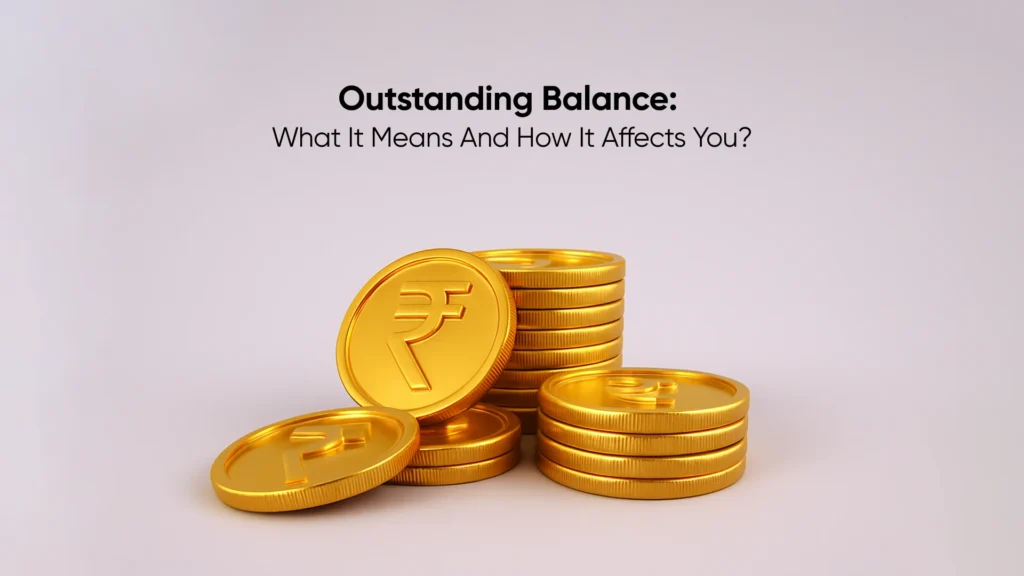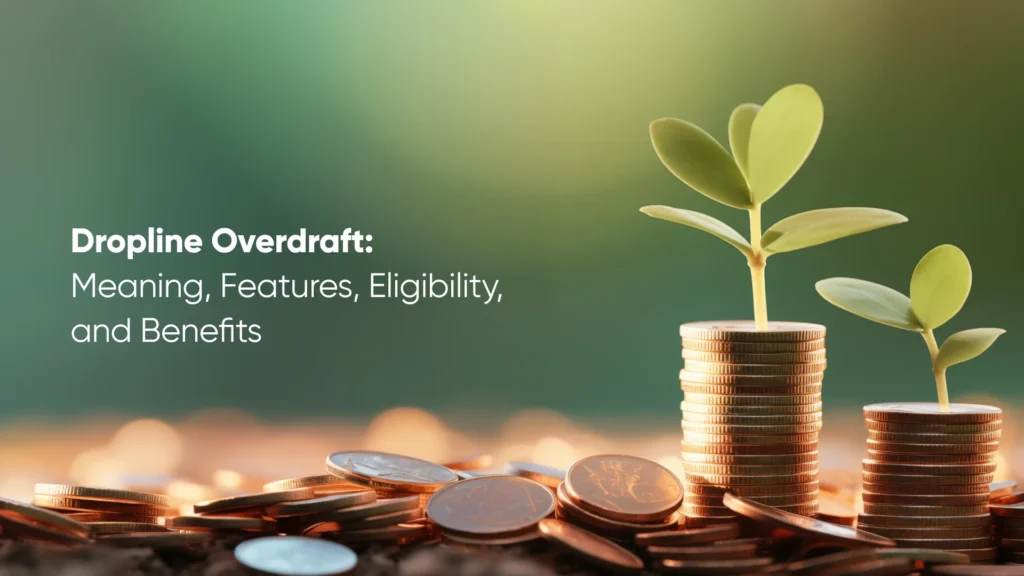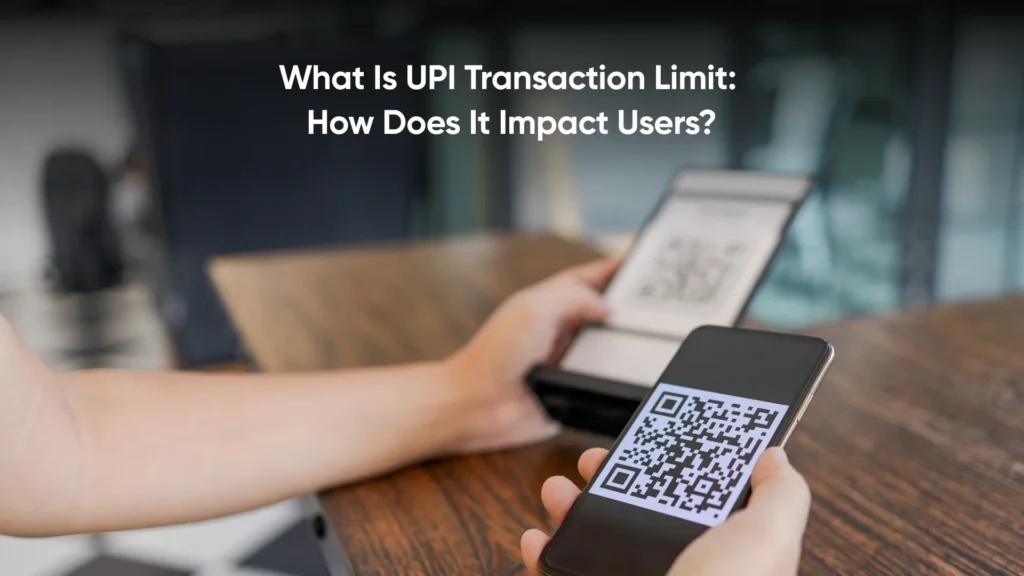Outstanding Balance: What It Means and How It Affects You

When managing credit cards or loans, understanding your outstanding amount becomes essential for financial health. With credit card transactions reaching Rs 18.26 trillion in India’s FY24 and outstanding credit card balances growing at 17% annually, millions of Indians regularly deal with unpaid balances.
This figure represents money you still owe to your lender after making partial payments or carrying debt from previous months. Knowing what is outstanding balance will help you make smarter financial decisions and avoid costly mistakes that could damage your credit profile.
Table of Contents
ToggleWhat is Outstanding Balance?
Your outstanding balance represents the total unpaid amount on your credit account at any given time. This includes your original purchases, any accumulated interest charges, fees, and previous unpaid amounts that have carried forward from earlier billing cycles.
Think of it as your summary of your current debt. When you make a Rs 10,000 purchase but pay only Rs 6,000 by the due date, your outstanding amount becomes Rs 4,000 plus any applicable interest. This remaining amount continues to accrue charges until you pay it off completely.
Banks calculate this figure by adding all your transactions, subtracting payments made, and including any finance charges or penalties. Recent RBI data shows that 31% of India’s total outstanding balances fall in the below-prime credit score category, indicating many borrowers struggle with debt management.
The balance appears on your monthly statement and updates in real-time as you make purchases or payments. Understanding this helps you track your spending against available credit limits.
Components of Outstanding Balance
Your outstanding amount consists of several elements that combine to create your total debt picture:
- Principal Amount: The original money you borrowed or spent using your credit card. This forms the base of your outstanding balance calculation.
- Interest Charges: Monthly finance charges are applied to any unpaid portion of your balance. Under the RBI’s March 2024 guidelines, interest charges apply only to the outstanding amount, adjusted for payments and refunds.
- Late Payment Fees: Penalties are added when you miss payment deadlines. Current regulations specify that these charges are calculated only on the overdue remaining amount, not your total balance.
- Over-limit Charges: Fees imposed when your spending exceeds your approved credit limit, automatically added to your outstanding amount.
- Cash Advance Costs: Higher interest rates and additional fees for withdrawing cash using your credit card, which immediately become part of your balance.
- Foreign Transaction Fees: Charges for international purchases or currency conversions that add to your total debt.
Impact of Outstanding Balance on Credit Score
Your outstanding balance significantly influences your credit score through the credit utilization ratio, which accounts for 30% of your CIBIL score calculation. Credit bureaus view high utilization ratios as indicators of financial stress, potentially lowering your creditworthiness.
Maintaining a remaining amount above 30% of your credit limit signals to lenders that you rely heavily on borrowed money. This perception increases their lending risk assessment. TransUnion CIBIL data reveals that 46% of consumers who monitored their credit scores improved their profiles within six months, often by reducing their outstanding balances.
Payment history, which accounts for 35% of your credit score, directly relates to how you manage your outstanding balance. Consistently carrying high balances or making only minimum payments creates negative scoring patterns. Your score improves when you regularly pay down balances and maintain low utilization rates.
Credit age and account mix also factor into scoring, but your outstanding balance management remains the most controllable element affecting your creditworthiness in the short term.
Managing and Reducing Outstanding Balance
If you want to keep your outstanding amount under control, you should use strategic planning and disciplined execution. Start by listing all your debts with their interest rates, minimum payments, and current balances. This gives you a clear picture of your total financial obligations.
- Create a Complete Debt Inventory: List every debt with its current outstanding balance, interest rate, minimum payment, and due date. This comprehensive overview reveals your total financial picture and helps prioritize repayment strategies.
- Pay Beyond Minimum Requirements: Always exceed minimum payments when financially possible. Minimum payments primarily cover interest charges, leaving your principal remaining amount largely untouched and extending your debt timeline significantly.
- Implement the Debt Avalanche Strategy: Focus extra payments on the highest-interest debts while maintaining minimum payments on others. This method reduces total interest costs and eliminates your outstanding amount faster than other approaches.
- Explore Balance Transfer Opportunities: Research credit cards offering lower interest rates for balance transfers. Moving your remaining amount to better terms can substantially reduce interest expenses, but avoid accumulating new debt on cleared cards.
- Establish Automated Payment Systems: Set up automatic payments to ensure consistency and prevent late fees that increase your outstanding balance. Automation eliminates human error and maintains steady debt reduction progress.
- Monitor Progress Monthly: Track debt reduction regularly to maintain motivation and adjust strategies as needed. Small, consistent payments typically outperform irregular large payments for sustainable outstanding amount reduction.
Also Read: Paying Credit Card Debt with Personal Loan: Pros & Cons
Differences Between Outstanding Balance and Payoff Amount
The main difference between outstanding balance and payoff amount is that your outstanding amount represents what you owed weeks ago based on your billing cycle, while the payoff amount includes all charges, interest, and fees that have accumulated through today’s date.
| Aspect | Outstanding Balance | Payoff Amount |
| Timing | Based on your last statement date, it is typically 15-30 days old. This creates a time lag between actual spending and reported balance | Real-time calculation that includes all transactions, fees, and interest up to the current moment you request it |
| Interest Inclusion | Only includes interest charged through your statement period. New interest since the statement date isn’t reflected | Includes all accrued daily interest from the statement date through today, giving you the exact amount needed |
| Fees Covered | Shows only fees that have been formally posted to your account on or before the statement date | Covers all pending fees, late charges, and over-limit penalties that may still be processing |
| Pending Transactions | Excludes purchases you’ve made that haven’t been posted yet, creating a potential discrepancy in the actual debt | May include authorized pending amounts depending on bank policy, providing a more accurate debt picture |
How to Check Your Outstanding Balance
Monitoring your outstanding amount regularly helps maintain financial control and prevents surprises. This is how you can regularly check your outstanding balance:
- Mobile Banking Apps: Most banks offer real-time balance checking through their mobile applications. Download your bank’s official app and register for instant access to current outstanding balance information.
- Internet Banking: Log into your bank’s website using secure credentials to view detailed account information, including the current remaining amount and recent transactions.
- SMS Banking: For Bank customers, use the features offered by your bank to receive balance information instantly.
- Customer Service Hotlines: Call your bank’s toll-free number to speak with representatives who can provide current outstanding balance details over the phone.
- ATM Balance Inquiry: Visit any ATM belonging to your bank to check current balance and recent transaction history without fees.
- Monthly Statements: Review paper or electronic statements for comprehensive balance information, though this may not reflect real-time changes.
Also Read: Consolidate your Debt with Personal Loan
Tips for Maintaining a Healthy Credit Balance
Keeping your outstanding amount manageable requires consistent financial habits and smart planning. Let’s have a look at some useful tips that can help you maintain a healthy credit balance:
- Set Payment Reminders: Use phone alerts or calendar notifications to ensure you never miss payment deadlines. Late payments add unnecessary fees to your outstanding balance.
- Pay Before Due Dates: Making payments a few days early prevents processing delays that could result in late charges affecting your remaining amount.
- Monitor Spending Regularly: Check your balance weekly rather than waiting for monthly statements. This helps you avoid exceeding credit limits and accumulating excessive debt.
- Use Credit Utilization Calculators: Tools available through platforms like Zype help you track how much of your available credit you’re using compared to your outstanding balance.
- Create Emergency Funds: Having savings reduces the need to rely on credit cards for unexpected expenses, preventing sudden increases in your outstanding amount.
- Negotiate Better Terms: Contact your lender if you’re struggling with payments. Many banks offer hardship programs that can help manage your remaining amount more effectively.
- Avoid Cash Advances: These typically carry higher interest rates and fees that immediately increase your outstanding balance significantly.
Conclusion
Your outstanding balance is a critical indicator of your financial health and directly impacts your ability to secure future credit. With India’s credit card market continuing to grow, reaching over 101 million cards in circulation, understanding how to manage your outstanding amount becomes increasingly important.
Successful debt management involves regular monitoring, strategic payment planning, and maintaining utilization ratios below 30% of your available credit. Remember that your remaining amount affects not just your current financial situation but also your long-term creditworthiness and borrowing capacity.
Frequently Asked Questions
An outstanding balance on a loan represents the total unpaid amount you still owe to your lender, including principal, accrued interest, and any fees that haven’t been paid yet.
Your outstanding amount impacts your credit utilization ratio, which makes up 30% of your credit score calculation. Higher balances relative to your credit limits can lower your score significantly.
The fundamental difference between an outstanding balance and a payoff amount is their purpose. Your outstanding balance shows what you owed weeks ago for monthly tracking, while the payoff amount tells you exactly how much money you need today to completely clear your debt.
You can check your ICICI Bank outstanding amount through multiple channels, including the net banking website, Mobile app, SMS to designated numbers, customer care helpline, WhatsApp banking service, or by visiting any ICICI Bank branch for in-person assistance.
The effective ways to manage and reduce outstanding balance include paying more than minimum amounts, focusing on high-interest debts first, avoiding new purchases while paying down existing remaining amounts, and considering balance transfers to lower-rate cards.
If you pay only the minimum amount of your outstanding balance, most of your payment goes toward interest, not reducing what you owe, so you stay in debt longer and pay more in the end.
Yes, high outstanding amounts can trigger over-limit fees, higher interest rates, and late payment charges if you miss deadlines or exceed your credit limits.
Check your outstanding amount at least weekly through mobile banking or online accounts to stay aware of your spending and prevent exceeding credit limits unexpectedly.













